The move to allow dumping of mercury __________ an outcry from residents of the area who _________ that high levels of mercury will affect their and destroy ecologically sensitive forest area.
resulted, insist
provoked, fear
incited , determined
activated, accept
The correct Answer is:B
Step by step video, text & image solution for The move to allow dumping of mercury __________ an outcry from residents of the area who _________ that high levels of mercury will affect their and destroy ecologically sensitive forest area. by English experts to help you in doubts & scoring excellent marks in Class 14 exams.
Topper's Solved these Questions
Similar Questions
A U-tube in which the cross-sectional area of the limb on the left is one-third of the limb on the right contains mercury (density 13.6g/cm3). The level of mercury in the narrow limb extends to a distance of 30cm from the upper end of the tube. What will be the rise in the level of mercury in the right limb, if the left limb is filled to the top with water (neglect surface tension effects)?
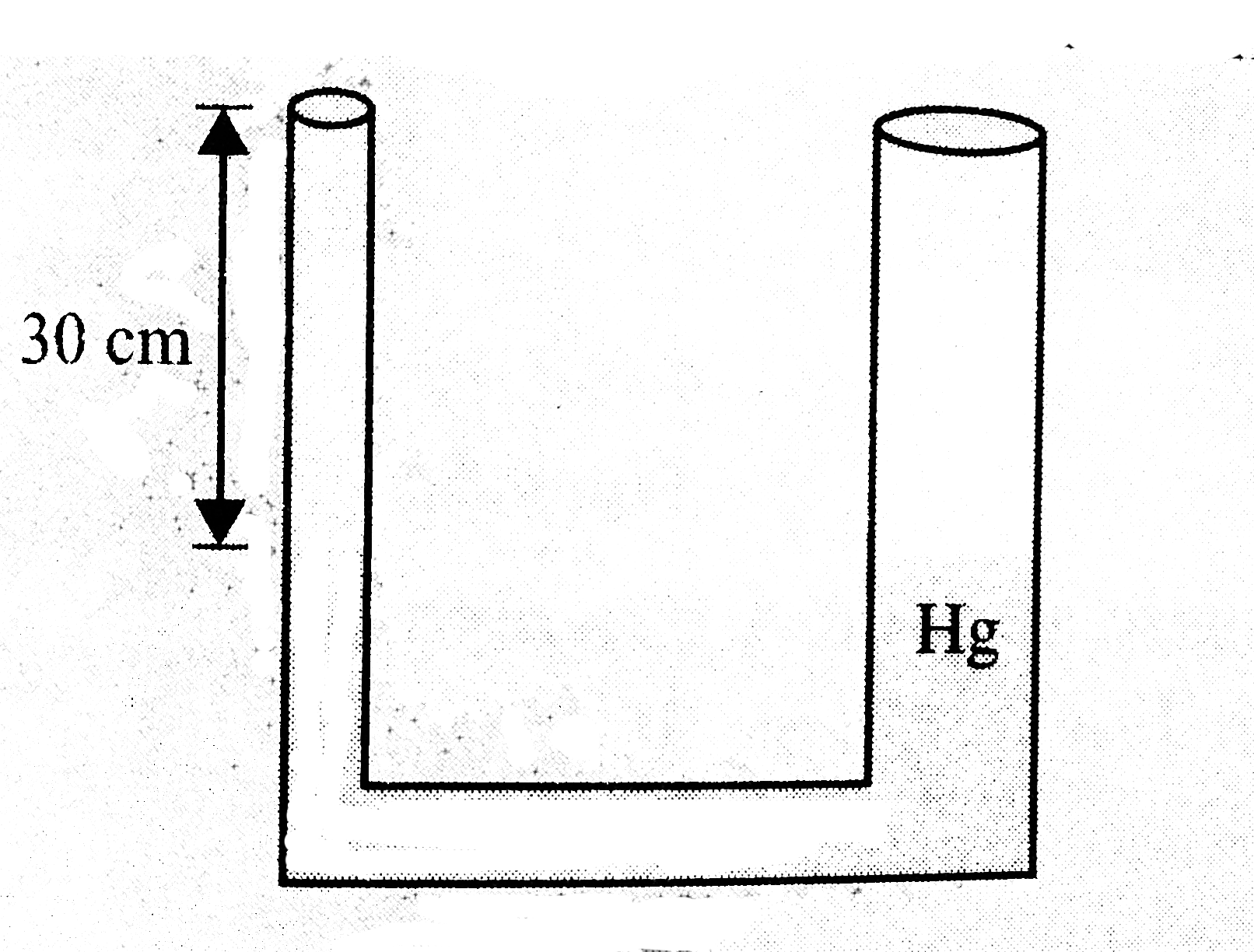 View Solution
View SolutionOne end of an insulating U tube is sealed using insulating material. A mono atomic gas at temperature 300 K occupies 20 cm length of the tube as shown. The level of mercury on two sides of the tube differ by 5 cm. The other end of the tube is open to atmosphere. Area of cross section of the tube is uniform and is equal to 0.01m2. The gas in the tube is heated by an electric heater so as to raise its temperature to 562.5 K. Assume that no heat is conducted to mercury by the gas.
(a) Find the final length of the gas column.
(b) Find the amount of heat supplied by the heater to the gas.
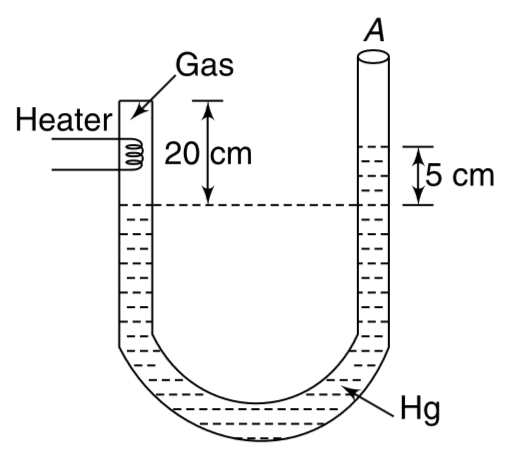 View Solution
View Solution
Knowledge Check
- Question 1 - Select One
An open U-tube contains mercury. When 11.2 cm of water is poured into one of the arms of the tube, how high does the mercury rise in the other arm from its initial level ?
A0.82 cmB1.35 cmC0.41 cmD2.32 cm - Question 2 - Select One
A U -tube in which the cross - sectional area of the limb on the left is one quarter, the limb on the right contains mercury (density13.6g/cm3). The level of mercury in the narrow limb is at a distance of 36 cm from the upper end of the tube. What will be the rise in the level of mercury in the right limb if the left limb is filled to the top with water ?
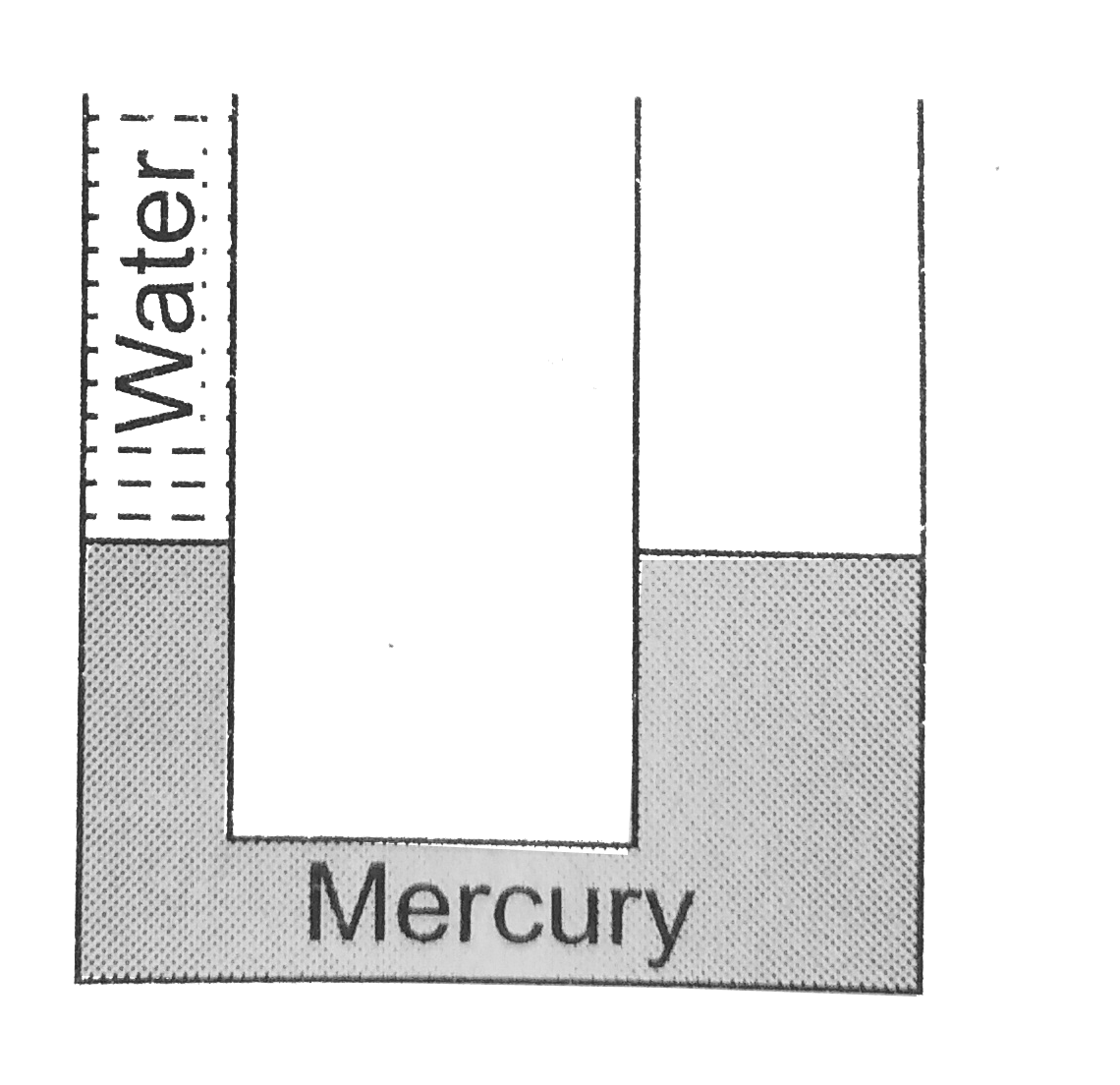 A1.2 cmB2.35 cmC0.56 cmD0.8 cm
A1.2 cmB2.35 cmC0.56 cmD0.8 cm - Question 3 - Select One
The Union Ministry of Environment and Forest recently approved in principle a proposal for Wastern Ghats Development prepared by K. Kasturirangan -led panel . The panel has recommended a ban on development activities in around 60000 sq . Km ecologically sensitive area spread over
AGujarat ,Andhra Pradesh ,Tamil Nadu ,Maharashtra , Kerala and KarnatakaBGujarat ,Maharashtra ,Goa ,Karala and Tamil NaduCOdisha , Maharashtra ,Goa ,Kerala ,Andhara Pradesh and Tamil NaduDKarnataka ,Odisha ,Gujarat ,Kerala ,Maharashtra and Tamil Nadu
Mercury is poured into a U-tube in which the cross-sectional area of the left-hand limb is three times smaller than that of the right one. The level of the mercury in the narrow limb is a distandce l=30cm from the upper end of the tube. How much will the mercury level rise in the right-hand limb if the left one is filled to the top with water?
View SolutionThe Union Ministry of Environment and Forest recently approved in principle a proposal for Western Ghats Development prepared by K. Kasturirangan-led panel. The panel has recommended a ban on development activities in around 60000 sq. km ecologically sensitive area spread over
View SolutionA monometer has mercuty and water filled in it as shown in the figure A scale is marked on the right tube which has a cross sectional area of A2. The other tube has a cross sectional area of A1. When pressures P1 and P2 at both ends of the manometer is same, the level of water in the right side is at the zero of the scale. When the applied pressure P1 is changed by ΔP0, the level of water surface changes by Δh. the quantity ΔhΔP0 can be defined as pressure sensitivity(s) of the manometer. Calculate the pressure sensitivity of the given manometer. Density of water and mercury is ρω and ρHg respectively.
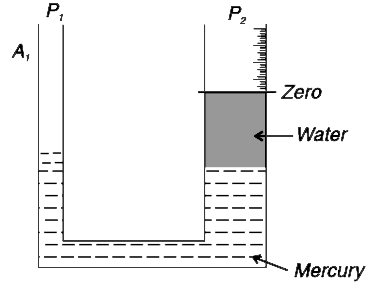 View Solution
View SolutionA barometer is an instrument that is used for the measurement of pressure The construction of the barometer is as follows:
A thin narrow calibrated capillary tube is filled to the brim with a liquid such as mercury and is inverted into a through filled with the same fluid Now depending on the external atmospheric pressure the level of the inside capillary comes to rest, then the net forces on the column should be balanced Applying force balance we get Patm×A=m×g
(A is the cross-sectional area of the capillary tube) if ρ is the density of the fluid, then m=ρ×g×h
(h is the height to which mercury has risen in the capillary)
Hence Patm×A=(ρ×g×h)×AorPatm=ρgh
Faulty Barometer:
An ideal barometer will show a correct reading only if the space above the mercury column is vacuum but in case if some gas column is trapped in the space above the mercury column then the barometer is classified as a faulty barometer. The reading of such a barometer will be less than the true pressure

For such a faulty barometer
P0A=mg+PgasA
P0=ρhg+Pgas
or ρgh=P0−Pgas
A tube closed at one end is dipped in mercury as shown in figure such that the closed surface coincides with the mercury level in the container By how much length of the tube should be extended such that the level of Hg in the tube is 5 cm below the mercury level inside the container? (Assume temperature remains constant)
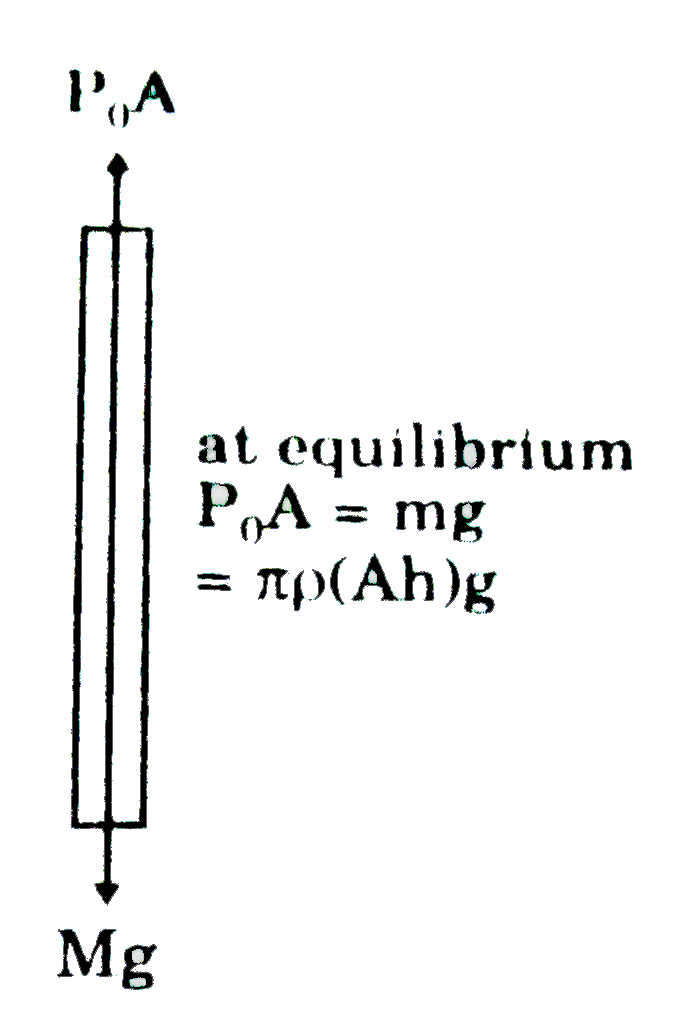
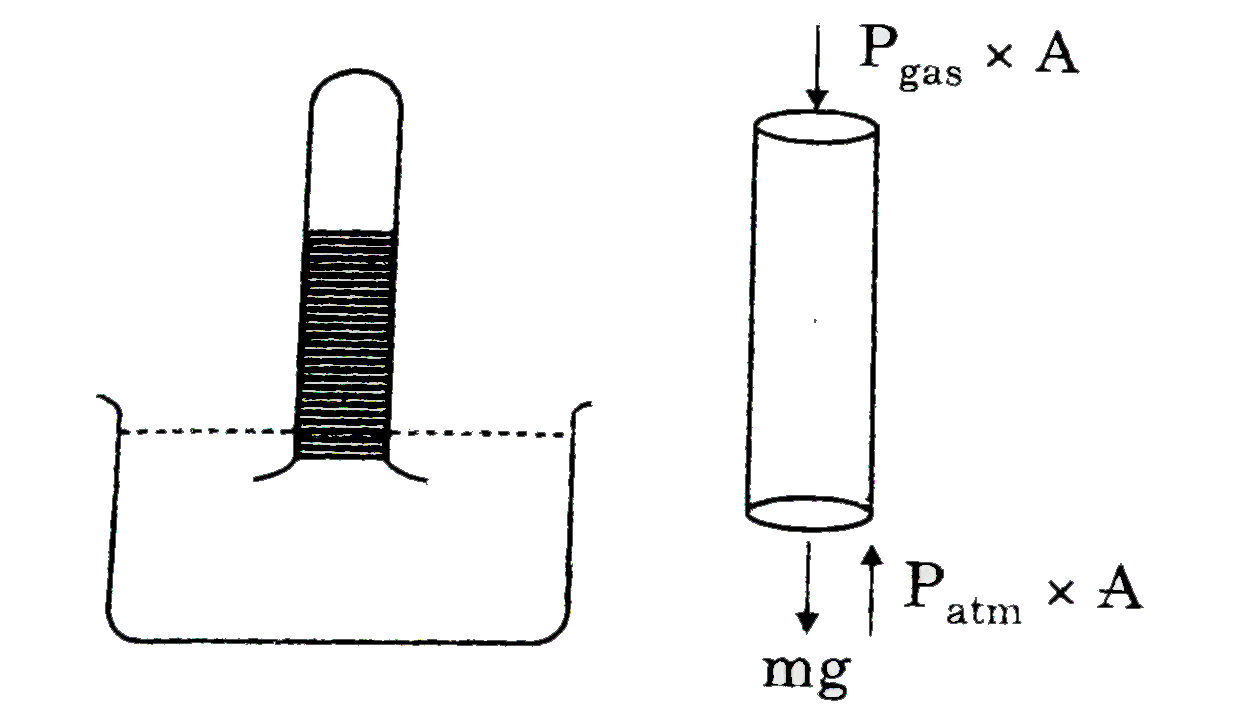
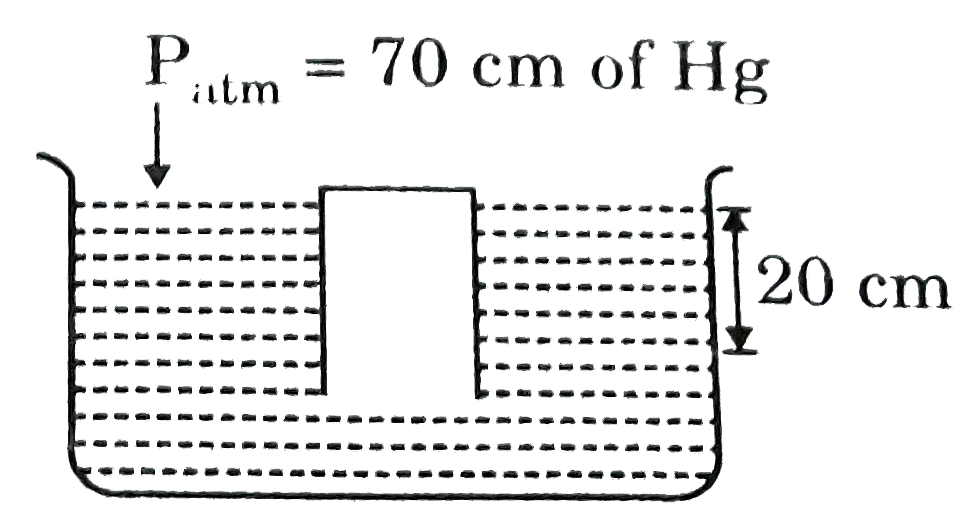 View Solution
View SolutionSuppose there are N molecules each of mass m, of an ideal gas in a container. The x component of velocity of a molecule is denoted by ux. The gas is enclosed using a horizontal piston of area A as shown.
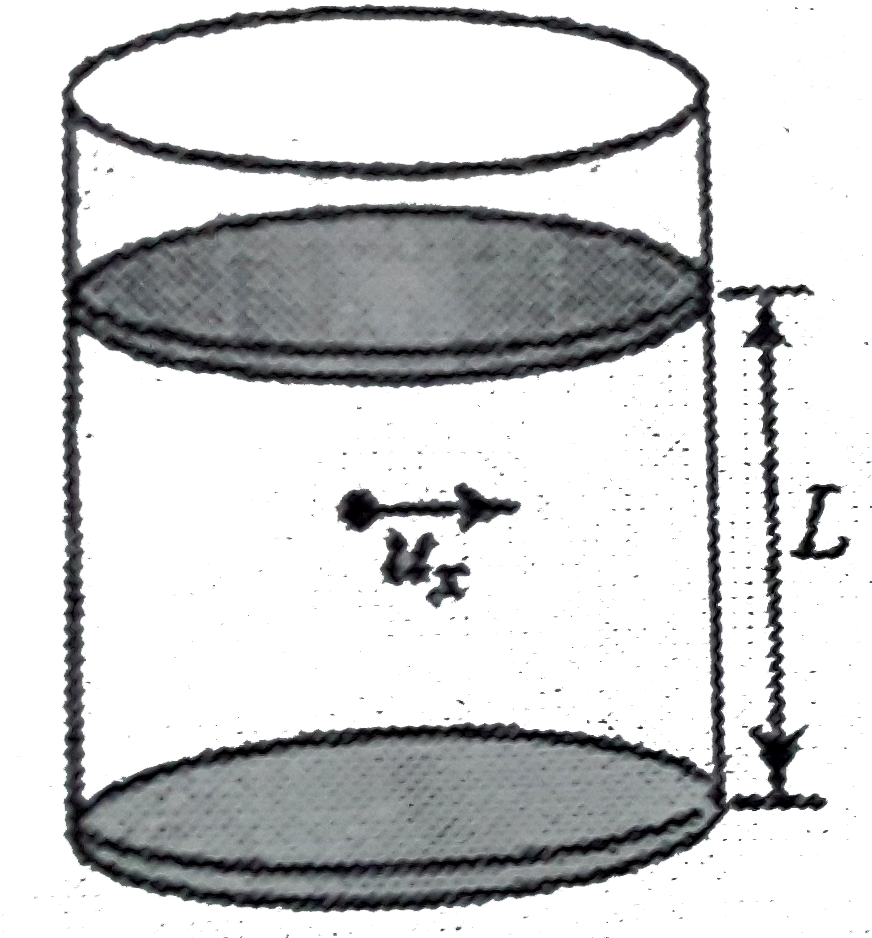
If the piston is moved in so as to reduce the volume of gas by half, keeping the temperature of gas constant, we know from the gas law that the pressure will be doubled. On microscopic level the increase in pressure on the Vertical side walls is becauseView Solution

